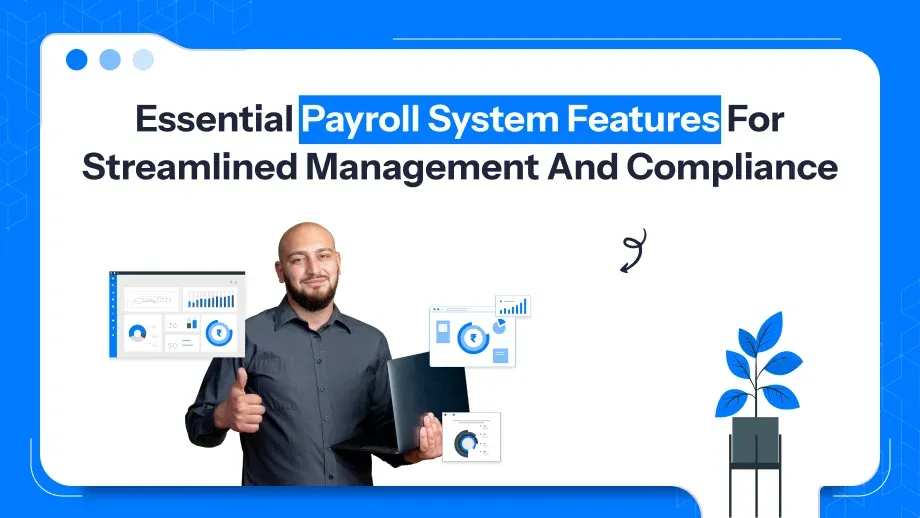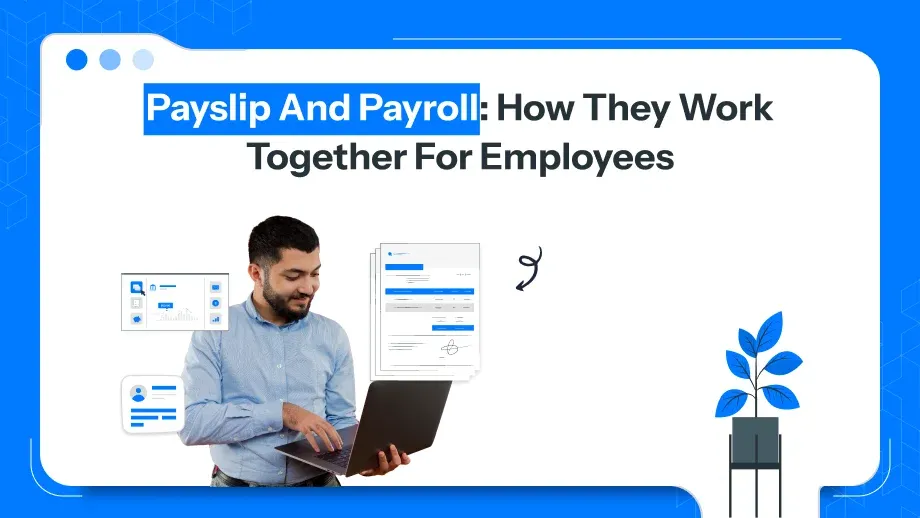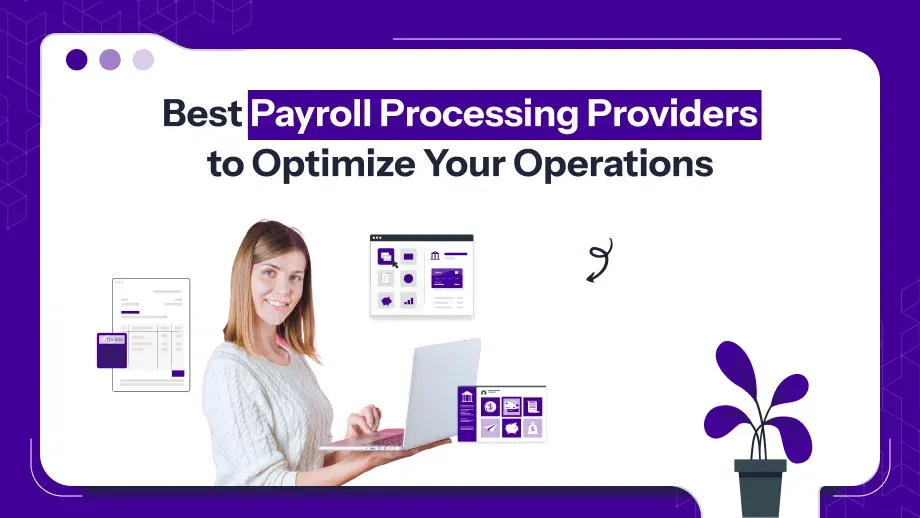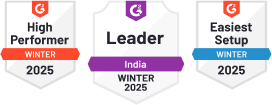
One of the most challenging tasks for payroll system features is payroll management, especially as it grows and expands. It can consume hours of valuable resources to ensure that every employee is paid accurately and on time, while complying with local and federal regulations. This is where a strong payroll system comes in.
It actually offers more than mere payment processing: key features, such as the automated payroll calculations, ensure accuracy in salaries, bonuses, overtime, and deduction. Tax compliance tools automatically calculate federal, state, and local withholding, thus significantly reducing the risks associated with penalties and fines.
Through direct deposit functionality, employees can be paid at the right time without delays; it also provides payroll system features with an opportunity to access pay stubs and benefits information on employee self-service portals.
What are the features of the payroll system?
Features of payroll management system are basically the important functionalities and tools provided by payroll software or systems that make all processes in handling payrolls to be efficiently accomplished. They automate, simplify, and streamline a good deal of the payroll management functions while ensuring correct payment, adherence to tax requirements, and efficiency in running operations.
There are some of the key payroll system features:
Automated Payroll Calculations
Overview: payroll system features automate the calculation of employee wages, which could be regular salary, overtime, bonus, and commission. Employees get paid correctly according to their work hours or pay rate.
Why it Matters: Mistakes in manual payroll calculations lead to errors that result in costly mistakes and employee dissatisfaction. Automated payroll calculation removes these risks.
Key Benefits:
- It saves time for manual calculations.
- Reduces human error, and hence employees get accurate pay.
- It automates handling of various kinds of pay (hourly, salaried, etc.).
Tax Compliance Tools
Overview: Every worker’s federal, state, and local tax deductions are automatically calculated by a payroll system. It guarantees that, in accordance with the relevant laws and employee tax statuses, taxes are deducted at the right rate. The system can also handle changes in tax laws and rates.
Why it Matters: Tax compliance is an essential payroll management issue. Incorrect calculations for taxes mean penalty, fine, and perhaps lawsuits. Automating compliance is key to preventing business entities from facing the uncertainty of tax regulatory changes.
Key Benefits:
- Updating of tax rates and rules becomes automatic, making accuracy possible
- Simplification of year-end reporting, whether it is the W-2s and 1099s
- Helping reduce risk on costly penalties and audits.
Explore payroll system features like automation and self-service portals.
Book a demo now to see how it can transform your business!
Direct Deposit Functionality
Overview: Business owners can eliminate paper checks by electronically transferring funds into their employees’ bank accounts in a direct deposit. Many payroll systems also come with features for split deposits in which an employee can split various parts of payment into multiple accounts.
Why It Matters: Relative to traditional payroll management system features paper checks, direct deposit is quicker, safer, and more efficient. Workers have no need to worry about lost or delayed paychecks since they are compensated on schedule.
Key Benefits:
- Quick and reliable payments.
- Reduces the need for manual processing and handling of paper checks.
- Offers employees convenience and flexibility in managing their pay.
Employee Self-Service Portal
Overview:Employee self-service portal allows the employees to have access to their payroll information. This can be in terms of pay stubs, tax forms, and even benefits details, as well as personal data. Employees may request time off or change direct deposit details with fewer HR interventions.
Why it Matters: A self-service portal takes some back-office tasks to the employees’ table and lets them view and manage their information. This would enhance satisfaction among employees and reduce the burden that HR staff had to bear.
Key Benefits:
- 24 / 7 access to their Pay Information
- Reduces HR workload by automating requests
- Increases transparency and communication between employees and HR.
Leave and Attendance Management
Overview: Payroll usually contains the mechanisms for leave which include vacation leaves, sick and holiday time in general. Such a payroll system features software that integrates leave management into payroll administration so that in computing employees salaries, they balance the leave already taken and against the total.
Why it Matters: Manual leave management is complicated and error-prone. An integrated leave management system ensures that the attendance of employees is accurately tracked and their deductions are calculated, so they are paid appropriately for their time off.
Key Benefits:
- Leave balances and accruals are automatically tracked.
- Errors in leave tracking and payroll calculations are reduced.
- Time-off requests and approval workflows are streamlined.
Customizable Reporting
Overview: Companies can create reports on a range of payroll-related topics, such as salary deductions, taxes, and benefits, using the largely customized reporting tools offered by payroll software. These documents support financial planning and audits and can be modified to match the specific needs of the business in question.
Why It Matters: Payroll report will inform businesses on expenses and ensure better decision-making. Customized reports ensure that any information needed can be obtained in whatever format a business prefers without going through a number of records.
Key Benefits:
- It helps track payroll data with detailed insight.
- It facilitates budgeting, financial planning, and auditing.
- Ensures compliance and performance monitoring.
Benefits Administration
Overview: An employee benefits program can be a part of the payroll system. It may track health insurance enrollments, eligibility, and contributions, retirement contributions, and other employee benefits. This can ensure accurate and timely deductions for all these.
Why it Matters: Employee benefits can be managed alongside payroll to meet compliance and efficiency requirements. Benefits contributions will be deducted correctly. Employees’ benefit information will also be current and up-to-date.
Key Benefits:
- Benefits enrollment and management is simplified.
- Ensures correct benefit deductions on paychecks.
- Streamlines open enrollment periods and benefits communication.
Security Features
Overview: features of the good Payroll systems are equipped with state of the art security features which enable protection of sensitive payroll information. They incorporate encryption, multi-factor authentication, as well as restricted access controls for users to ensure that only the authorized persons have access to payroll data.
Why it Matters: Payroll information is very confidential and also a form of personally identifiable information because it involves SSN as well as details about an individual’s bank accounts. Ensuring safety from fraudulent attacks and potential breaches would require maximum protection both to the company as well as employees.
Key Benefits:
- Confidential employee as well as the firm’s information protected
- Prevention of fraudulent acts as well as data breach.
- Adhering to Data protection law -GDPR and CCPA.
Scalability
Overview: A payroll system features a system that should be scalable. It should be able to grow with your business. It should be flexible enough to support changes in employee numbers, opening new locations, or introducing a new pay structure as your business continues growing and expanding.
Why it Matters: When businesses grow, their payroll needs become more complex. A scalable payroll system means that it is able to handle growth and change in new payroll requirements without a hitch.
Key Benefits:
- Supports business growth and changing payroll needs.
- Reduces the need for system upgrades or changes as the business evolves.
- Offers long-term cost savings by avoiding system migrations.
How Payroll Systems Features Can Benefit Your Business?
Any firm can benefit from a well-designed payroll system. It guarantees legal compliance, expedites payroll processing, lowers errors, and gives HR departments and business owners valuable time. Above all else, however, payroll system features provide significant advantages to raise growth, promote employee happiness, and improve overall business success.
Reduce Administrative Burden
Features of a payroll system automatically carry out many of the time-consuming and redundant payroll processing activities. Calculating wages, tax management, and record-keeping are extremely resource-intensive, particularly in large organizations that have numerous employees.
Guarantee Accuracy and Error Prevention
Payroll errors, including wrong paychecks or tax miscalculations, can cause frustration among employees and, in the worst case, lead to financial penalties for the business. Automated calculations and tax compliance tools minimize the risk of such errors in a payroll system.
Improving Retention and Employee Satisfaction
Workers would feel more at ease knowing that their paychecks will arrive on schedule, with all benefits and taxes made properly. The happiness of workers might rise substantially with the use of portals for self-service and current technology for payment like direct deposits.
Compliance with Tax and Labor Laws
Payroll system features can assist in guaranteeing adherence to labor laws (such as wage requirements and overtime regulations), social security contributions, and complex tax regulations. The operational load on the finance and human resources departments is reduced by payroll systems ability to handle these complexity automatically.
Providing Data-Driven Insights for Better Decision Making
Payroll systems don’t only handle transactions but also generate very detailed reports and analytics in order to supply insight into the company’s payroll expenses, trends, and overall financial health. This characteristic can be employed in developing much more informed business decisions.
Benefits Administration Streamlined
Managing employee benefits, including health insurance, retirement contributions, and bonuses, can be complex. Payroll systems can handle the entire process, from managing enrollments to tracking contributions, and ensure the correct deductions are made each pay period.
Scalability for Growing Businesses
As your business continues to grow, your payroll will likely become complex. A reliable payroll system will be scalable; it can cope with the rise in the number of employees as well as changes in pay structures and compliance.
Enhancing Data Security and Privacy
Systems for payroll handle sensitive employee data, such as salary information, account details, and identification numbers. Advanced security features like encryption, access limitations, and frequent backups are included in a solid payroll system to safeguard sensitive data.
Conclusion
Payroll system features are very crucial for businesses wanting to streamline operations, ensure compliance, and improve efficiency. The features include payroll calculation automation, integration with other systems, and reduced errors. By doing this, time is saved and administrative burden reduced. This way, by using tax compliance tools, an employee self-service portal, and reporting capabilities, a business can assure that payroll is processed accurately and in time to result in the improved satisfaction of employees and smooth-running operations.







